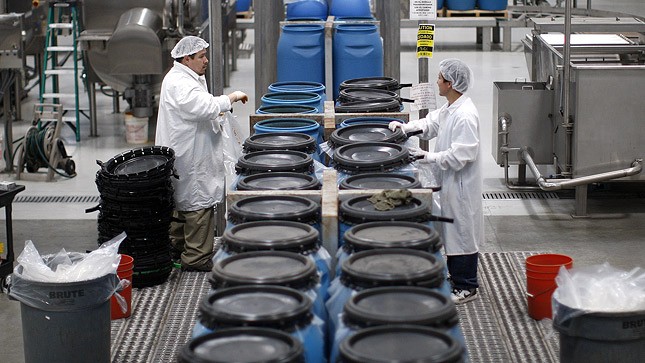Will The Skills Gap Impact Advanced Manufacturing In Small Town USA?
Most of us, regardless of our age, have heard the song popularized by Sophie Tucker and Eddie Cantor after World War I: “How Ya Gonna Keep ‘Em Down on the Farm (After They’ve Seen Paree?).”
According to Wikipedia, “The lyrics highlight concern that American soldiers from rural environments would not want to return to farm life after experiencing the … life and culture of Paris.”
Now we face a similar challenge: getting skilled workers to stay in or relocate to the small and mid-sized towns and cities where U.S. manufacturing is making its biggest comeback.
That may be one of the hidden factors behind the much-discussed skills gap: not only is there a shortage of skilled workers in certain occupations, but it’s sometimes difficult attracting those with the right skills to the locations where they’re needed most, including such places as Cottondale, Ala., near Tuscaloosa, Ridgeville, S.C., some 38 miles from Charleston, Senatobia, Miss., about 40 miles south of Memphis, and West Point, Ga., a dot on the map approximately midway between Atlanta and Montgomery, Ala.
I mention those towns in particular because they’re all part of the U.S. manufacturing renaissance, which my colleagues and I at BCG have been discussing for several years.
Building a new factory, however, gets you only so far. As Richard Florida, director of the Martin Prosperity Institute at the University of Toronto, reported recently, people with skills and talent typically gravitate to “superstar cities,” such as New York and Los Angeles, or to “knowledge and tech hubs” like Boston, San Francisco, Seattle and Washington, D.C., not to small towns in the South.
Related Article: The Next Industrial Revolution Should Happen In America
For many such people, attracted by the glitz and glamour of fast-paced big cities, even such highly livable places as Charleston and Greenville, S.C., Louisville, Ky., and Mobile, Ala., just don’t cut it.
History might tell us what happens next. As it turns out, the worries of 1919 that the returning doughboys wouldn’t want to stay on the farm were overblown. Over time, it became unnecessary for them to be there.
Thanks to automation and other advances in agricultural knowledge and technology, just decades after WWI, U.S. agriculture no longer needed millions of farm hands to feed America (and much of the rest of the world).
As a result, farm employment declined dramatically. According to the Bureau of Labor Statistics, between 1910 and 2000 the “two occupation groups of farmers (including farm managers) and farm laborers (including foremen) combined declined 96% as a proportion of total [U.S.] employment,” falling from 33% of the U.S. labor force in 1910 to 1.2% at the beginning of the new millennium.
If they weren’t needed down on the farm, where did they go?
Many found work in America’s factories, in places like Akron, Bethlehem, Buffalo, Cedar Rapids, Cleveland, Detroit, Gary, Pittsburgh, St. Louis, Toledo, and Youngstown—what we now call the Rust Belt. After World War II, the United States not only fed the world, we manufactured for the world, too.
Then things changed. Many products previously Made in the USA, such as consumer electronics, were taken over by others, leading to the disappearance of such iconic American brands as Admiral, Philco, RCA Victor, and Zenith. Countless U.S. manufacturing jobs migrated overseas, first to Japan in the 1960s and 70s, and more recently to Mexico, China and elsewhere. Most cities in the Rust Belt paid a heavy price. You know the story.
Now we’re seeing a resurgence of U.S. manufacturing, fueled primarily by rising labor costs overseas and low energy costs at home. But the boom isn’t taking place, for the most part, in the Rust Belt, or even in and around the knowledge and tech hubs; it’s taking place in places that often are playing catch-up in terms of education, technology, the arts and other quality-of-life factors that help attract families.
As I’ve noted before, the new factories cropping up in places such as Cottondale and Senatobia have little in common with the dirty, sweaty plants where some of our parents and grandparents may have worked. This means less strain is required of the workforce, but more brain.
[clickToTweet tweet=”The Next-Generation #Factory is a Wonder of #Automation and #ArtificialIntelligence #AI” quote=”‘The next-generation factory is a wonder of automation and artificial intelligence (AI).’ Harold Sirkin” theme=”style6″]
Communities, like the ones mentioned above, can’t change where they are. And they’re not likely to change who they are—their local culture; Ridgeville, I think it’s safe to say, will not quickly become another San Francisco.
What they can do, however, is make sure what they offer in high-quality education closely aligns with the needs of employers as this manufacturing transformation continues.
SOURCE: Forbes









If you want textile/ manufacturing type factories , don’t build them .come to Brockton ma, we have several abandoned factories that could be sold cheap. And a workforce of middle and lower class . New immigrants looking for the American dream and lifelong locals . Too many plusses to mention .